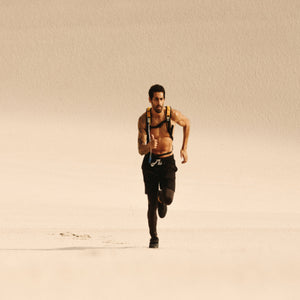The History of African Tribal Art
What is African tribal art?
African tribal art (also referred to as traditional African art or indigenous African art) encompasses diverse traditional expressions from indigenous African cultures, including sculptures, masks, textiles and pottery. Rooted in spiritual beliefs, these artworks serve various ritual and social functions, with rich symbolism and captivating regional variations.

Masks represent spirits and roles, sculptures convey stories, textiles reflect cultural identity, and beadwork adorns jewelry and clothing. These art forms connect past and present, showcasing Africa's vibrant cultural heritage while evolving to meet modern influences.
The origins of African tribal art
The history of African tribal art dates back to ancient times, where early expressions of this art form were deeply intertwined with spiritual practices, rituals and social roles.
Cave paintings, rock engravings and body adornments are some of the earliest forms of African tribal art, revealing the profound relationship between people and their natural surroundings. These artistic creations were not just decorative; they conveyed beliefs, stories and traditions that were crucial for the survival and cohesion of these societies.
Tribal art and spirituality
African tribal art is deeply intertwined with spirituality and rituals. Many artworks were created for specific ceremonies, rites of passage and communal celebrations. Masks, for example, were used to embody spirits, ancestors or deities during religious rituals. These masks were believed to hold spiritual power and played a crucial role in bridging the human and spiritual realms.
The Dogon people of Mali, for instance, create intricate wooden sculptures called kanaga masks, representing ancestral spirits and serving as mediators between the living and the divine. These marks are worn during rituals called dama, which aim to transport the souls of deceased family members away from the wearer’s village.
The impact of European colonialism
The arrival of European colonial powers in Africa brought about significant shifts in the landscape of tribal art. Many artifacts were collected by colonial authorities and missionaries, leading to the dispersal of these cultural treasures to museums and private collections around the world.
This period of colonialism also had a profound impact on the production and purpose of tribal art, as it often became commodified for external markets rather than being solely rooted in indigenous traditions. Despite these challenges, African communities have managed to preserve and revitalize their artistic heritage, adapting to changing circumstances while keeping their cultural identities alive.

Global recognition of African tribal art
In recent decades, there has been a growing global appreciation for African tribal art as more people recognize its intrinsic value and cultural significance. Some contemporary African artists, influenced by their tribal roots, are now infusing traditional techniques and themes with modern interpretations.
Aboudia Abdoulaye Diarrassouba, known simply as Aboudia, is an Ivorian artist who has gained international acclaim for his dynamic and expressive paintings. His works often blend the influences of street art and traditional African iconography, creating a visual language that speaks to both his personal experiences and broader societal issues.
Aboudia's work exemplifies the fusion of traditional and contemporary that characterizes the evolution of African tribal art. This global artistic revival not only serves to keep ancient traditions alive but also allows for the exploration of new narratives and perspectives.
Institutions like the African Art Museum in Dakar, Senegal, and the Zeitz Museum of Contemporary African Art in Cape Town, South Africa, are dedicated to showcasing these artistic endeavors and bridging the gap between tradition and innovation.
Preservation and ethical considerations
As the interest in African tribal art continues to rise, there is a need for responsible preservation and ethical considerations. Passionate repatriation efforts are underway to return looted artifacts to their countries of origin, some of which have been more successful than others. The aim of these endeavors is to allow communities to reconnect with their heritage.
As well as this, the growing market for tribal art raises concerns about cultural appropriation and the exploitation of indigenous artists. It is imperative that collectors and enthusiasts engage in fair and respectful practices that honor the cultural origins of these artworks.
Conclusion
The history of African tribal art is a captivating journey through time, culture and creativity. From its origins as functional expressions of spirituality and identity, to its transformation and revival in the modern world, this art form provides an invaluable window into the complexities of African societies. As we continue to explore and appreciate African tribal art, let us do so with the utmost respect, understanding and consideration for the cultural legacies it embodies.


